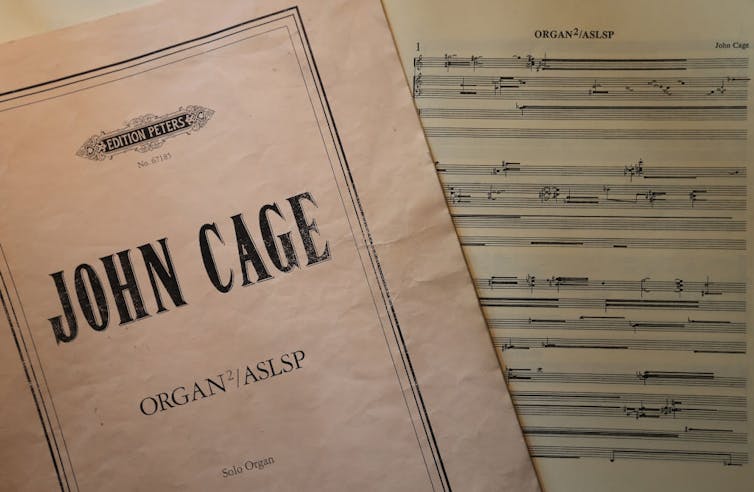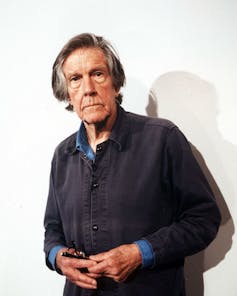Composers rely themselves lucky when musicians proceed to hold out their music after their lack of life.
Nonetheless the American avant-garde composer John Cage, who died in 1992in no way would have guessed {{that a}} single effectivity of his music would begin in 2001 and nonetheless be collaborating in. Truly, it isn’t attributable to conclude for another 616 years.
In a marathon effectivity like this, any little change turns into large info. On Feb. 5, 2011, as an illustration, one among many first three notes stopped sounding – after being sustained for eight years.
On Feb. 5, 2023, one different phrase goes to start out collaborating in – the first since Feb. 5, 2022. This one will doubtless be comparatively fast; it’s going to maintain spherical for beneath the next two years.
The piece generally known as “Organ2 /ASLSP.”
“ASLSP” refers again to the phrase “as slowly and softly as potential,” a reference to a quotation that appears near the tip of James Joyce’s novel “Finnegans Wake” – “Mushy morning metropolis! Lsp!”
Initially written for piano in 1985, Cage made an affiliation for organ. Identical to the piano ranking, Cage in no way specified how prolonged the piece must be carried out. Most of its performances have lasted between 20 and 70 minutes.

Jens Wolf/Picture Alliance by Getty Photographs
At a chat earlier to the work’s German premiere in 1987, the musicologist Heinz-Klaus Metzger puzzled aloud – half jokingly – how prolonged a effectivity must last, since an organ can keep sound indefinitely. A gaggle of organists, artists, college students and theologians took Metzger’s question and regarded how a very prolonged effectivity might flip right into a actuality.
The effectivity is going on on the St. Burchardi Church in Halberstadta small metropolis in central Germany some 133 miles (214 kilometers) southwest of Berlin. The church dates from 1208, and in 1361 an enormous organ was put in, one among many first to have a keyboard of the type that is now universally used for pianos and completely different such gadgets.
That organ is prolonged gone, nonetheless this historic previous impressed the organizers to resolve on the positioning for the event. Builders constructed a rather a lot smaller instrument and put in it throughout the church, one merely large enough to accommodate the sparse number of musical notes throughout the piece.
Is that this uncommon piece of music a joke? A grand artistic utterance? An regularly event? Sometimes I’m not sure myself, and I’ve been studying Cage and his music for the earlier 25 years.
A provocative composer
All through his lifetime, John Cage was no stranger to controversy. He was one among many first classical composers to jot down down music for percussion gadgets solely, because of he felt that any sound could very effectively be utilized in music.
Nonetheless his most well-known – presumably notorious – composition is “4ʹ33,ʺ” a bit with no sounds the least bit.

United Archives/Hulton Archive by Getty Photographs
There are quite a few explorations of what the piece means; among the many most interesting is by musicologist James Pritchettwho traced Cage’s curiosity in silence to his analysis of Jap non secular traditions and a rising dislike for the materialism of the West.
For me, it’s an essential illustration of Cage’s curiosity in Zen Buddhism.
Zen has to do with turning into aware of the whole thing in life. The ugliest issue is just as important as in all probability probably the most beautiful. One different important concept is that it’s a lot better to have the benefit of points whereas they last, precisely because of they gained’t last.
Should you take heed to “4ʹ33ʺ,” you’re listening to irrespective of sounds happen to be spherical you all through a effectivity. You’re always going to pay attention to at least one factor completely completely different, and in addition you always get the prospect to pay attention to at least one factor that you just simply may want ignored in every other case.
Lastly Cage began to actually really feel that composers ought to easily let sounds be sounds. They shouldn’t try and string them collectively to make of us actually really feel a certain technique or take into accounts a particular topic.
He did this by way of utilizing what he generally known as “chance operations.” Cage thought-about musical composition as a course of involving a sequence of numbered potentialities for every side of the music. For instance, in a bit for two pianos, Cage numbered your entire potential notes. He then used particularly designed software program program to select which ones would appear throughout the piece. One different chance operation would reply the question of whether or not or not that phrase may be part of a chord and, in that case, what the additional notes have been. It’s a very time-consuming course of.
Cage accepted irrespective of sounds the prospect operations acknowledged, as a result of the sounds have been pleasurable on their very personal. Late in life, he elaborated on this idea:
“I like sounds – merely as they’re. And I’ve no need for them to be one thing larger than what they’re. I don’t want them to be psychological. I don’t want a sound to fake that it’s a bucket, or that it’s president, or that it’s in love with one different sound. I merely want it to be a sound.”
That sometimes leads of us to imagine they should don’t have any feelings the least bit listening to Cage’s music. Nonetheless Cage beloved sounds, and love is unquestionably a way.
Would Cage have accredited?
Naturally, a composer who took such a radical technique to music runs the prospect of performances that in the reduction of his ideas to absurdity.
I keep in mind preparing a effectivity of his “Monitor Books” in Amsterdam the place one among many musicians decided to interpret Cage’s instruction for an “auxiliary sound” as an invitation to offer an imitation of flatulence. I gently instructed the musician that Cage had always tried to make musical compositions that sounded not like one thing he had heard sooner than; as he wrote in his second e e-book, “A 12 months from Monday,” he wanted the freedoms that he composed in his music to be taken considerably by performers, to make them nobler of us.
I considered this as soon as I first began finding out regarding the Halberstadt organ mission.
No performers are sitting on the organ, day in, day journey, throughout the cathedral the place the piece is being carried out. Instead, an digital bellows pumps air into the organ; the individual-sounding notes are constructed from inserting or eradicating pipes of various lengths into the organ as they’re needed.
A 639-year effectivity of a bit of music, it appeared to me, was a poor use of human and environmental belongings – and additional of a gimmick than it was an precise piece of music. I said as rather a lot in my e e-book on Cage revealed in 2012, noting with dismay that Germany’s public broadcasting system, Deutsche Welle, erroneously reported that Cage himself deliberate the extraordinary size of the work.
It was solely last 12 months, all through a podcast dialog with Laura Kuhn, the supervisor director of the John Cage Perceptionthat I was ready to see the “Organ2 /ASLSP” effectivity in a model new light.
Pondering aloud regarding the various methods during which Kuhn has launched others in touch with Cage’s ideas, I seen that Cage was, above all, a composer who sought out new strategies of making music. The organ effectivity undoubtedly demonstrates that artistic impulse.
In a technique, it’s moreover one different good illustration of Zen: The sounds last so prolonged that they merely flip right into a presence, like wind throughout the air or clouds throughout the sky.
